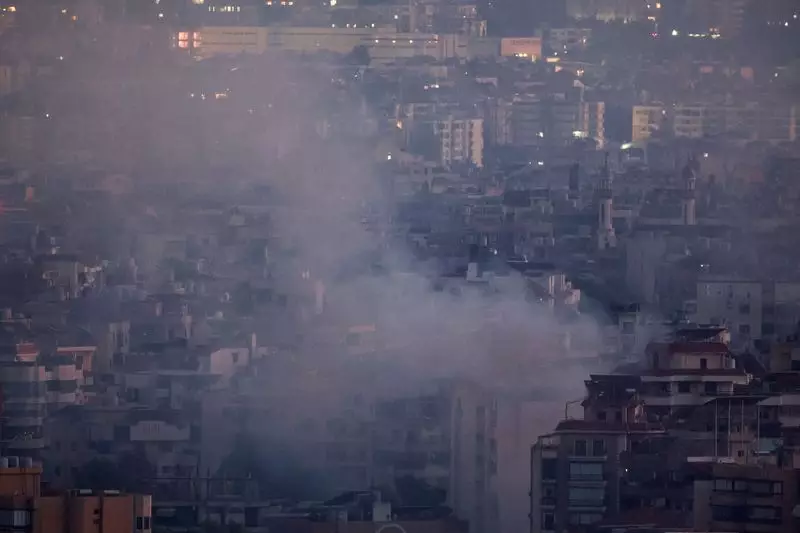In a startling escalation of hostilities, Israeli airstrikes have targeted the Kola district of Beirut, resulting in the deaths of three leaders from the Popular Front for the Liberation of Palestine (PFLP). This marks the first major Israeli assault within the confines of Lebanon’s capital, reflecting a significant shift in military operations against Iranian-affiliated groups. Reports indicate that the airstrike struck the top floor of a residential building, raising urgent questions about the ramifications of such actions on civilian life and regional stability.
The PFLP’s vocal condemnation of the attack underscores the gravity of the situation as regional tensions continue to heighten. Eyewitness accounts affirm the severity of the bombardment, with audible explosions reverberating throughout the city. The absence of an official response from the Israeli military emphasizes the possibility of an air campaign aimed at destabilizing Iran’s influence in the region, a strategy that appears increasingly aggressive.
This incident does not exist in isolation. It follows a pattern of heightened Israeli military operations against Hezbollah in Lebanon and Houthi militia activities in Yemen. Such actions reflect Israel’s intent to confront the networks linked to Iran, which has consistently supported various militant factions across the region. The timing of these strikes aligns with Israel’s prior actions, which included recent airstrikes on Houthi positions and various Hezbollah sites, escalating a multifaceted conflict that encompasses several nations.
The Israeli government’s justifications for these military actions are rooted in claims of self-defense, stating that they are necessary to protect northern regions from perceived threats. The implications of these strikes, however, extend far beyond immediate military objectives. As Hezbollah and Iran regroup and respond to these assaults, the risk of a broader conflict spiraling out of control grows. Observers are increasingly concerned that if retaliatory strikes occur, they could involve not just regional forces but also major powers, including Iran and the United States.
The humanitarian impact of this sustained military campaign is profound and devastating. Statistics from Lebanon’s Ministry of Health reveal a catastrophic toll, with over 1,000 Lebanese lives claimed and thousands more injured, many of whom are civilians caught in the crossfire. Displacement has reached alarming levels, with reports indicating that around one million people—essentially 20% of Lebanon’s population—have fled their homes, seeking refuge from relentless hostilities.
In Beirut, the sight of families seeking shelter in public spaces like Zaitunay Bay highlights the desperate plight faced by many. Residents have resorted to sleeping under bridges, a stark routine for those fleeing the violence that has enveloped southern Lebanon in recent weeks. The question of accountability arises as international observers call for investigations into the extent of civilian casualties and the conducts of military operations within populated areas.
As the conflict continues to escalate, calls for a diplomatic solution have emerged, primarily championed by the United States. However, the balancing act between advocating for peace and augmenting military presence in the region reflects a complicated geopolitical landscape. The U.S. has authorized increased military reinforcements, indicating a preparedness to engage, should the situation deteriorate further.
While diplomatic resolutions hold the potential for reducing hostilities, they remain entangled in a web of distrust and entrenched interests. A multi-faceted approach is essential, necessitating dialogue involving not only the direct conflict participants but also international stakeholders who wield influence in the region.
In retrospect, the recent events in Beirut signify a critical juncture in the ongoing Israeli-Palestinian conflict and its ripple effects throughout the Middle East. As military actions intensify and civilian suffering mounts, the international community must grapple with the urgent need for constructive engagement and conflict resolution. The path ahead remains fraught with challenges, but without decisive action, the specter of a broader regional conflict looms ominously on the horizon. The stakes are not merely territorial; they encompass the human toll and the broader quest for peace in a historically volatile region.

